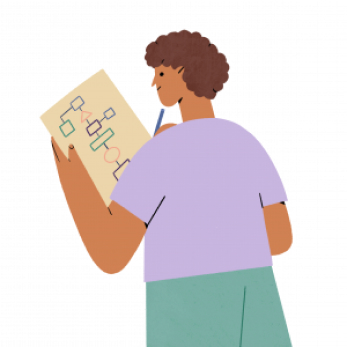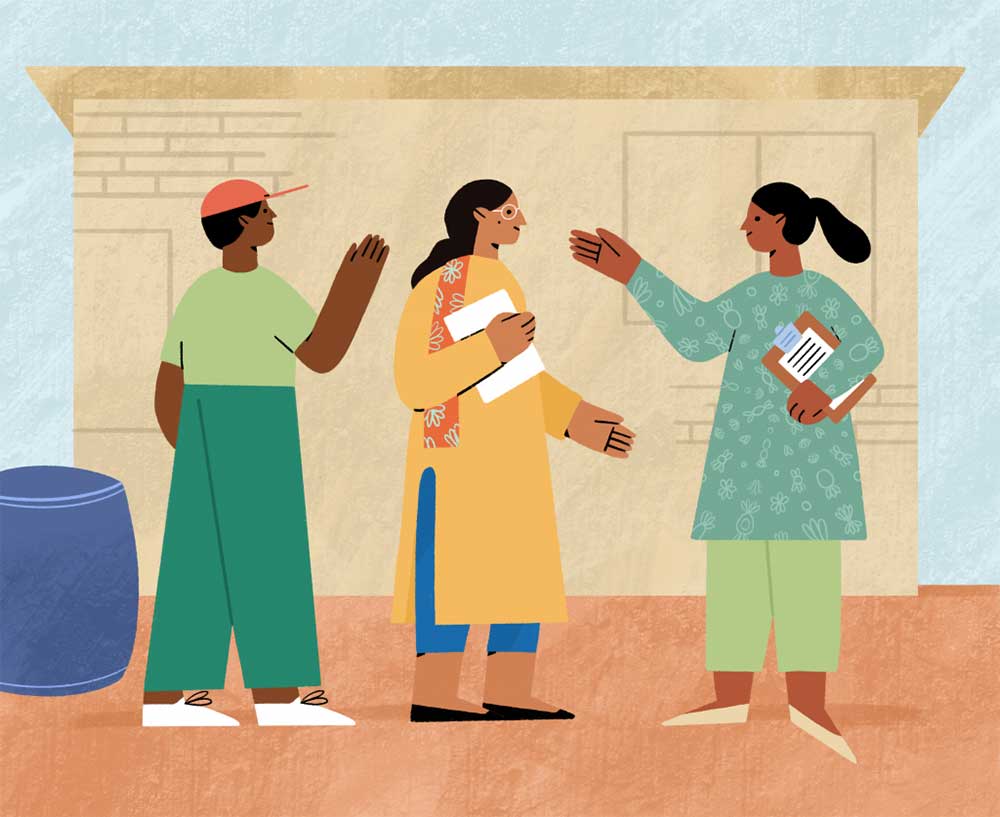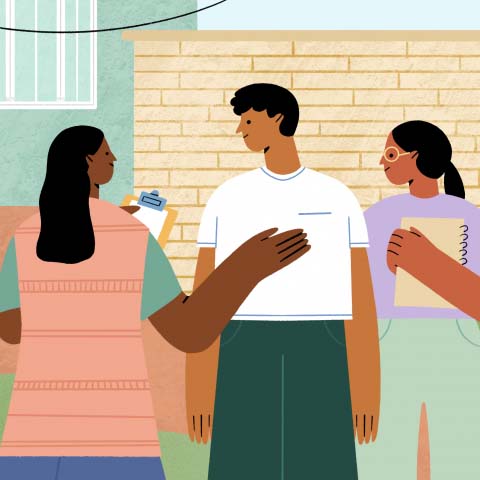Needs assessment
In order to be effective, your program must be responsive to the needs of the community it aims to serve. Seeking out perspectives from the communities where the program will operate will enable you to make a thoughtful diagnosis of the problem your program aims to solve. This is where a needs assessment comes in – it helps you understand the problems that your target population faces and the surrounding economic, political, and social context.

In an evidence review, you go through existing research to learn more about your program context. A needs assessment can include an evidence review, but you would usually also collect original data.
You would likely conduct an evidence review over a needs assessment if the information about the context surrounding your target population is well-documented – but in most cases, you’ll need to conduct fieldwork to make sure you have recent, local data about the needs of your target population.
Example
Suppose you plan to boost girls’ attendance by providing free menstrual hygiene management products in school. You first conduct a needs assessment, and learn from the students and their families that girls already have access to menstrual hygiene management products. However, the lack of bins in school bathrooms limit the students’ ability to dispose of used products discreetly, which is why girls prefer not to attend school when they are menstruating. Based on this evidence, you shift focus from providing menstrual hygiene management products to providing bins in all bathrooms.
Which questions can a needs assessment answer?
A needs assessment can help you decide which problems to address, diagnose common causes of those problems, and identify programs that are likely to solve them. For example, you may observe that attendance in primary schools is low in a particular district. A needs assessment might reveal that parents do not believe there are high returns from sending their children to school regularly, and that the perceived benefits for boys are higher than those for girls. Based on this needs assessment, you develop a program to educate parents about the benefits of schooling, particularly for girls.
A needs assessment can reveal whether you should fundamentally alter or terminate the program. Some key considerations are:
- The problem your program is trying to address does not exist. For example, implementing a program to build awareness of HIV in a context where knowledge of HIV is already high, and HIV prevalence is low.
- Your program does not address the root of the problem you are trying to solve. For example, providing incentives for girls to attend school if there is no school within reasonable walking distance and no cost-effective means of transportation.
- The community’s needs are already being served better by someone else. For example, you plan to sell livestock vaccines to smallholder farmers, but farmers can already get vaccines for free from the government.
Conducting a needs assessment when your program is already up and running can help you assess whether you are reaching the people you need to. Continuing from a previous example on parental perceptions affecting school attendance, let’s say you observe after a couple years that attendance in early grades has improved dramatically, but many older children are dropping out between primary and secondary school. You realize that the needs of your target population have shifted, and shift the focus your program to retention and remedial education, rather than convincing parents to send their children to school in the first place.
Next steps - Conducting a needs assessment
Needs assessments usually involve analyzing secondary data from sources such as recent nationally representative or local surveys, conducting new household surveys, interviewing key stakeholders, conducting focus groups, or some combination of all of these activities.
Should you do the needs assessment yourself or hire an expert?
Your organization may have the capacity to do a needs assessment on its own- most organizations can conduct interviews and focus group discussions on their own. Activities such as analyzing survey data would require a stronger technical background. You may want to hire an external party if you do not have the expertise or available capacity to conduct household surveys and analyze data.
How to conduct your needs assessment
Our step-by-step instructions and template will help you design and execute a needs assessment
Your target population is the community your program aims to serve. It’s helpful to be as specific as possible, and identify whether you are targeting certain demographics. For example, your program may broadly set out to support farmers, but you may be particularly interested in supporting women farmers who do not own land.
Create a list with the questions you don’t know the answers to. To get you started, here are some questions to consider:
a. Which communities do you plan to serve?
b. What are the major problems they face?
c. How much of a burden do these problems pose?
d. What are some potential causes for these problems?
e. Is anyone else trying to solve these problems? What are they doing, where do they operate, and how successful has their approach been?
Create a list of assumptions your theory of change makes. For example, are you making assumptions about your target population’s availability at certain times? Their location? Their access to transportation? Whether they possess certain assets (such as a cell phone on which to receive calls)?
Log in to access your theory of change. Add any untested assumptions about your target population to your list of questions.
For example, say your program relies on cell phone access. 100% of your target population may not have access to cell phones – so what is the minimum number of people who must have cell phones in order for your program to work? Can your program work with 75% mobile phone penetration? 50%?
Creating these thresholds upfront gives you a framework you can use to quickly take action based on your results. It also gives your team time to think through potential program redesigns and contingency plans.
Needs assessments can use quantitative data (anything that can be represented as a number) or qualitative data (harder-to-summarize observations and conversations). Choose metrics that meaningfully capture the things you care about.
You can use the indicator selection guide to shortlist metrics!
To do a needs assessment, you will need to review secondary sources and/or speak to community members. Here are some suggestions:
– Reviewing secondary sources – Look for academic papers, survey data, and policy reports. Find other organizations involved in this issue or this community – it may be useful to go through their website and speak to their team. Finally, look through your program archives and speak to the team members who are on-site– your program’s data and reports can be very valuable!
For more detailed guidance, have a look at the evidence review step-by-step instructions.
– Conversations with community members– Speaking to community members is critical for making sure you have recent, local, and reliable data. Informal conversations are a useful starting point, but you will likely need to collect data in a more systematic way, such as through surveys, focus group discussions, and in-depth interviews.
When choosing which community members to speak to, make sure to include a diversity of perspectives so you can develop a more holistic understanding of the context.
Quantitative data analysis for a needs assessment usually involves calculating summary statistics and comparing them to your assumptions: What percent of the population is affected by this issue? What are the top reasons people give for this issue? This type of analysis can usually be done in Excel or Google Sheets, or through more sophisticated statistical or data visualization software.
Analyzing qualitative data can be more time-consuming and can take a range of approaches.
Use this new information to refine your program so it is more responsive to what the community needs. Depending on what you find, you may decide to tweak your program slightly, redesign large parts of it, or even pivot towards addressing a different problem than the one you originally set out to solve. Any changes should be reflected in your theory of change.

Guide
Not sure where to go from here? Use our guide to frame a question and match it to the right method.

Needs assessment case study
How a needs assessment enabled a nonprofit in Senegal to validate that they were addressing an important problem










